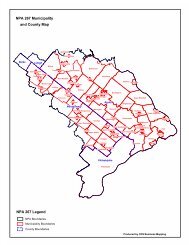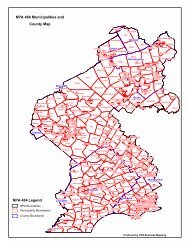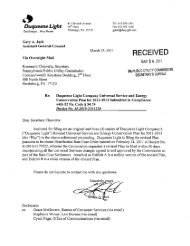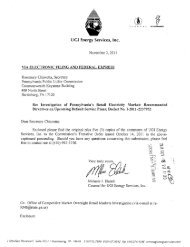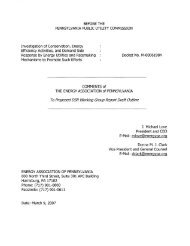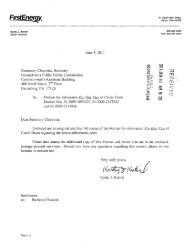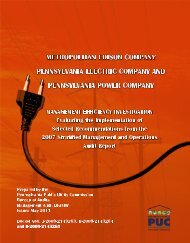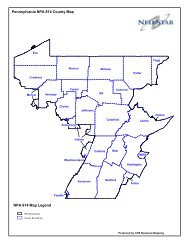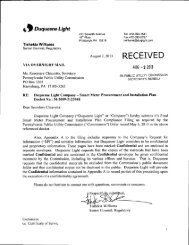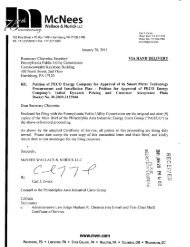2010 Report - Pennsylvania Public Utility Commission
2010 Report - Pennsylvania Public Utility Commission
2010 Report - Pennsylvania Public Utility Commission
Create successful ePaper yourself
Turn your PDF publications into a flip-book with our unique Google optimized e-Paper software.
Figure 17 Average deviation in peak loadforecasts (%)6543210Figure 18 Average deviation in commercialforecasts (%)6543211 2 3 4 5Years Forecast in AdvanceFigure 19 Average deviation in residentialforecasts (%)6543210Figure 20 Average deviation in industrialforecasts (%)121086421 2 3 4 5Years Forecast in Advance01 2 3 4 5Years Forecast in Advance01 2 3 4 5Years Forecast in AdvanceMost utility forecasts have appreciably improved over time. There is, however, a significant rangein the magnitude of forecast deviations from company to company. At the extremes, PPL’s peakload forecast deviations have ranged from 2.6 percent to 4.7 percent, whereas Penn Power’sdeviations ranged from 7.6 percent to 9.2 percent. Figures 21-24 compare EDCs’ absolute averageforecast deviations from actual figures for peak load and residential, commercial and industrialenergy demand for forecasts made one to five years in advance.There has been little difference between the forecast accuracy of the residential and commercialsectors; however, forecasts for both of these sectors have, for the most part, been considerablymore accurate than those made for the industrial sector.Generally, residential and commercial energy demand has tended to be underestimated; whereasindustrial energy demand has been overestimated. This can be seen in Figure 25 where the averageshort-term forecast error (deviation) is examined for peak load and for each major customer class.30<strong>Pennsylvania</strong> <strong>Public</strong> <strong>Utility</strong> <strong>Commission</strong>



